
Happy Nutrition Month! This special month I would like to focus on fats. The fats we eat. We use to be afraid of eating fat, right? We thought fat made us fat. I hope by now we know fats are a very important part of our nutrition plan. Of course there are better fats to eat than others. Let’s dive deeper, shall we? Bad fats versus good fats.
Fats help you absorb some vitamins and minerals. Have you heard of fat soluble vitamins? A, D, E, and K vitamins need dietary fat to absorb. Fat is needed to build cell membranes, the vital exterior of each cell, and the sheaths surrounding nerves. It is essential for blood clotting, muscle movement, and inflammation. For long-term health which I hope all of us are after, some fats are better than others. Good fats include monounsaturated and polyunsaturated fats. Bad ones include industrial-made trans fats. Saturated fats fall somewhere in the middle…
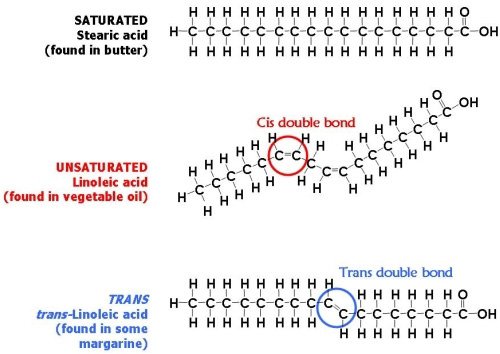
A great way to start thinking of fats is their chemical composition. Really look and think about the configuration. All fats have a similar chemical structure: a chain of carbon atoms bonded to hydrogen atoms. What makes one fat different from another is the length and shape of the carbon chain and the number of hydrogen atoms connected to the carbon atoms. Seemingly slight differences in structure translate into crucial differences in form and function in the ol bod. Think of something hard to break and something easily broken going through your blood vessels. What do you think is best? The body likes to be able to break things down easily without a lot of muss and fuss.

Trans-Fats: Bad boy fats
The worst type of dietary fat is the kind known as trans fat. It is a byproduct of a process called hydrogenation that is used to turn healthy oils into solids and to prevent them from becoming rancid. When vegetable oil is heated in the presence of hydrogen and a heavy-metal catalyst such as palladium, hydrogen atoms are added to the carbon chain. This turns oils into solids. It also makes healthy vegetable oils more like not-so-healthy saturated fats. On food label ingredient lists, this manufactured substance is typically listed as “partially hydrogenated oil.” Make sure to check ingredient lists so you can watch out for this word hydrogenated.
Basically hydrogenation happens so the food manufactuarers can increase the shelf life on their product and make their product more creamy and delicious. That Jiffy peanut butter may taste great but it’s like processing plastic in your body. Your body will inflame like crazy trying to figure out what to do with this foreign substance. Don’t do that to yourself.
Not convinced? Welp, your LDL cholesterol increases (this is the harmful cholesterol) while your HDL decreases (this is your beneficial cholesterol, the cleaners). It does a double whammy unlike any other fat out there. When LDL increases and HDL (think lousy and healthy respectively) decreases your risk of heart disease, stroke, diabetes, other chronic conditions and just wild inflammation occurs. Even small amounts of trans fats can harm health: for every 2% of calories from trans fat consumed daily, the risk of heart disease rises by 23%.
By the way trans fats have no safe level of consumption. Today, these mainly man-made fats are rapidly fading from the food supply. Friggin finally!
Saturated Fats: In-between fats
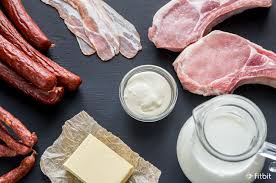 Saturated fats are found in animal products and tropical oils (palm and coconut) and are usually solid at room temperature. Think butter, lard and coconut oil.
Saturated fats are found in animal products and tropical oils (palm and coconut) and are usually solid at room temperature. Think butter, lard and coconut oil.
Yes, coconut oil. Though it may be the new, trendy oil, take a look at that chemical chain again of a saturated fat. Solid fats, including coconut oil and palm oil, may have deleterious effects on atherosclerotic cardiovascular disease risk factors. Current claims of documented health benefits of the tropical oils are unsubstantiated, and use of these oils should be limited. Sorry Paleo and Whole 30!
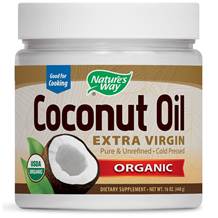 The word “saturated” here refers to the number of hydrogen atoms surrounding eachcarbon atom. The chain of carbon atoms holds as many hydrogen atoms as possible — it’s saturated with hydrogens.
The word “saturated” here refers to the number of hydrogen atoms surrounding eachcarbon atom. The chain of carbon atoms holds as many hydrogen atoms as possible — it’s saturated with hydrogens.
The Academy of Nutrition and Dietetics states that virgin coconut oil is high in lauric acid, a medium-chain fatty acid that raises both good and bad cholesterol levels. Dietary medium-chain triglycerides have been shown to radically reduce the production of a variety of pro-inflammatory markers, increase the activity of the histamine-clearing enzyme, increase mucus production, and support gut-barrier healing. Coconut oil also has diverse antimicrobial properties and thus may be great for people with bacterial or yeast overgrowth. But even with these benefits, the Academy of Nutrition and Dietetics still warns that coconut oil is a saturated fat, and one should “use coconut oil in moderation and buy the kind labeled ‘virgin.’”
So should we avoid all saturated fats?
One meta-analysis of 21 studies said that there was not enough evidence to conclude that saturated fat increases the risk of heart disease, but that replacing saturated fat with polyunsaturated fat may indeed reduce risk of heart disease.
Two other major studies narrowed the prescription slightly, concluding that replacing saturated fat with polyunsaturated fats like vegetable oils or high-fiber carbohydrates is the best bet for reducing the risk of heart disease, but replacing saturated fat with highly processed carbohydrates could do the opposite. Fascinating right?
Good fat
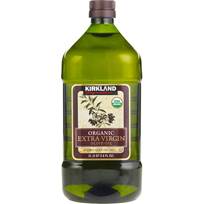 Good fats come mainly from vegetables, nuts, seeds, and fish. They differ from saturated fats by having fewer hydrogen atoms bonded to their carbon chains. Healthy fats are liquid at room temperature, not solid. There are two broad categories of beneficial fats: monounsaturated and polyunsaturated fats.
Good fats come mainly from vegetables, nuts, seeds, and fish. They differ from saturated fats by having fewer hydrogen atoms bonded to their carbon chains. Healthy fats are liquid at room temperature, not solid. There are two broad categories of beneficial fats: monounsaturated and polyunsaturated fats.
Monounsaturated fats. When you dip your bread in olive oil at an Italian restaurant, you’re getting mostly monounsaturated fat. Monounsaturated fats have a single carbon-to-carbon double bond. The result is that it has two fewer hydrogen atoms than a saturated fat and a bend at the double bond. We like bendy! This structure keeps monounsaturated fats liquid at room temperature. Good sources of monounsaturated and polysaturated fats are olive oil, peanut oil, canola oil, avocados, most nuts, high-oleic safflower and sunflower oils. Although there’s no recommended daily intake of monounsaturated fats, the Institute of Medicine recommends using them as much as possible along with polyunsaturated fats to replace saturated and trans fats.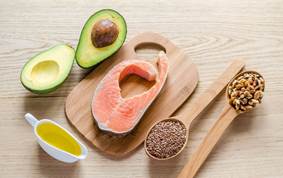
Polyunsaturated fats. When you pour liquid cooking oil into a pan, there’s a good chance you’re using polyunsaturated fat. Corn oil, sunflower oil, and safflower oil are common examples. Polyunsaturated fats are essential fats. That means they’re required for normal body functions but your body can’t make them. So you must get them from food. Polyunsaturated fats are used to build cell membranes and the covering of nerves. They are needed for blood clotting, muscle movement, and inflammation.
A polyunsaturated fat has two or more double bonds in its carbon chain. There are two main types of polyunsaturated fats: omega-3 fatty acids and omega-6 fatty acids. You’ve heard of these right? The numbers refer to the distance between the beginning of the carbon chain and the first double bond. Both types offer health benefits.
Eating polyunsaturated fats in place of saturated fats or highly refined carbohydrates reduces harmful LDL cholesterol and improves the cholesterol profile. It also lowers triglycerides. Bing bang boom!
Good sources of omega-3 fatty acids include fatty fish such as salmon, mackerel, and sardines, flaxseeds, walnuts, canola oil, and unhydrogenated soybean oil.
Omega-3 fatty acids may help prevent and even treat heart disease and stroke. In addition to reducing blood pressure, raising HDL, and lowering triglycerides, polyunsaturated fats may help prevent lethal heart rhythms from arising. Evidence also suggests they may help reduce the need for corticosteroid medications in people with rheumatoid arthritis.
Omega-6 fatty acids have also been linked to protection against heart disease. Foods rich in linoleic acid and other omega-6 fatty acids include vegetable oils such as safflower, soybean, sunflower, walnut, and corn oils. BUT the story is complicated with Omega-6 fats. Americans have a jacked up ratio of Omega-3’s to Omega-6’s. We eat a lot of Omega-6’s but not enough Omega-3’s SO, I say shoot for Omega-3’s first. Omega-6’s will take care of themselves. And to further complicate, choose Omega-6’s over saturated fats and most definitely over trans-fats.
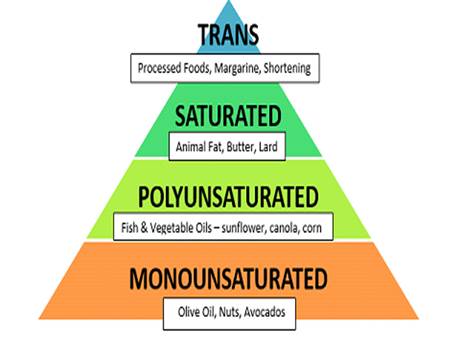
If you didn’t get much from all that mumbo jumbo above then here are some key takeaways:
- Top dog fats (i.e. best type of fat): Monounsaturated fats and Omega 3’s (examples are extra virgin olive oil and fatty fish respectively)
- Choose Polyunsaturated fats over saturated fats
- If you do choose to have saturated fats coconut oil might be the best bet
- Never (or mega limit) choose trans fats (look for hydrogenation in the ingredients and run if you see it)
- Get around 35% of total calories from fat (some might need more some might need less). Include a healthy fat at each meal
| Typical foods | Most prevalent type of fat |
| High-fat cuts of red meat (beef, lamb, and pork), full-fat dairy products (such as butter, cheese, ice cream, milk and cream), palm oil, coconut oil and lard. | Saturated |
| Rapeseed oil, olives, sunflower seeds, sesame seeds, avocados, almonds, peanuts, hazelnuts and their oils. | Monounsaturated |
| Oily fish (like salmon, mackerel, herring, trout), rapeseed oil, soft fat spreads, walnuts, soybeans, flaxseeds (linseeds) and their oils. | Omega-3 polyunsaturated |
| Soft fat spreads, sunflower seeds, wheat germ, sesame seeds, walnuts, soybeans, corn and their oils. | Omega-6 polyunsaturated |
| Vegetable oils that have undergone a partial hydrogenation process* and are now present in products such as baked goods. Naturally present in milk, beef and lamb. | Trans |
*Partially hydrogenated fat is declared on the food label list of ingredients
We did it. We got through a complicated nutrition article on fats! Pick one take away and move along your day. J
Toodliloo!
Miriam Jirari Turner
Studio SWEAT Dietitian
Resources:
https://mountainx.com/living/local-experts-explore-the-truth-about-fat/
http://www.eufic.org/en/whats-in-food/article/8-facts-on-fats
https://www.nutritionaction.com/daily/fat-in-food/truth-comes-coconut-oil/
https://www.health.harvard.edu/staying-healthy/the-truth-about-fats-bad-and-good



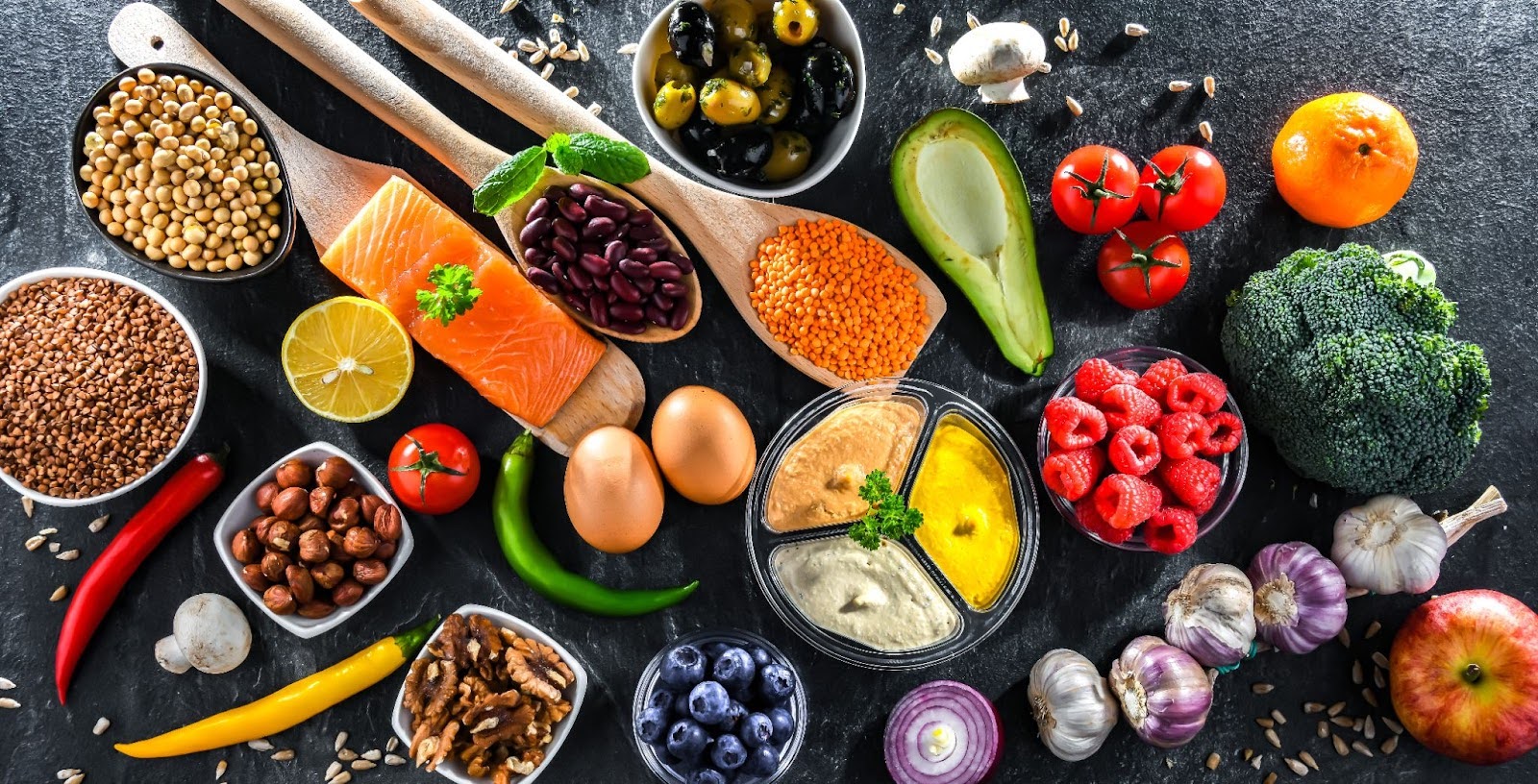





Comments - 0